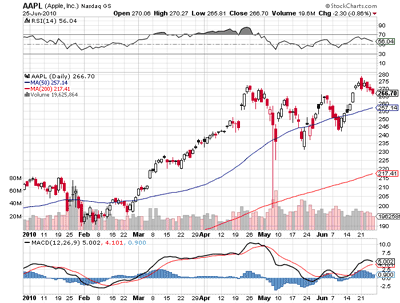The initial months of this year have been characterized by a low implied-volatility (IV) environment in virtually all underlying securities. This milieu ended suddenly and abruptly on the recent “flash crash,” and IV generally remains significantly elevated above its recent nadir.
An example of the recent rise in IV can be seen in Apple (AAPL). This underlying spent most of 2010 with options trading at IVs of 30% or below. The options have recently begun trading in the range of an IV of 35% and higher—even as high as 54%.
For the trader who is bullish on AAPL, the stage is set for a return to lower levels of IV. It is important to recognize that positions characterized by being long volatility (positive “Vega” trades, for example, long calls) will likely be negatively impacted by increasing prices since IV is generally inversely related to price.
Option strategists wanting to take a bullish position in AAPL may want to consider trade structures that offset much, if not all of the impact of decreasing IV. In “optionspeak,” this can be described as reducing the Vega of the position. Such strategies could include buying a vertical debit call spread as opposed to a single-legged long call position. This technique is referred to as volatility hedging. More on this in future articles.
By Dan Passarelli of MarketTaker.com


















